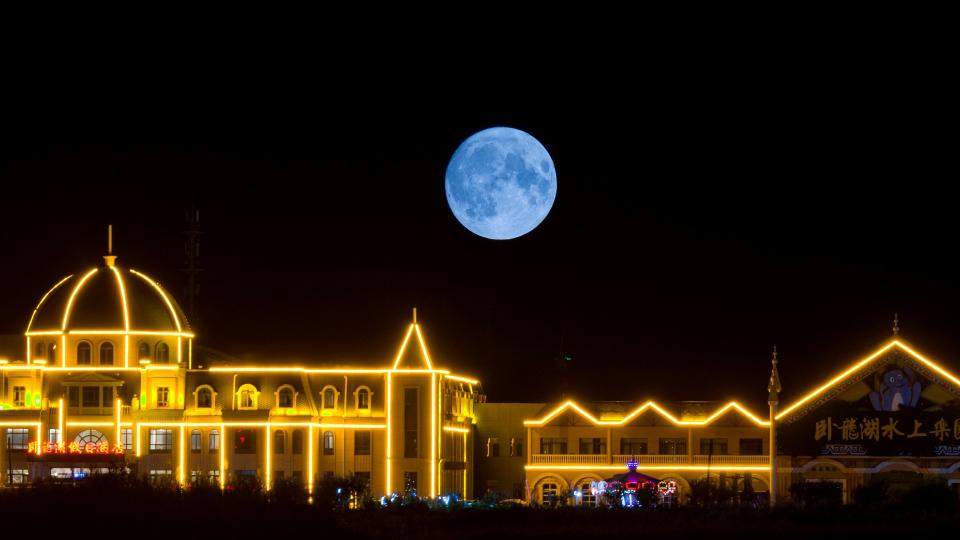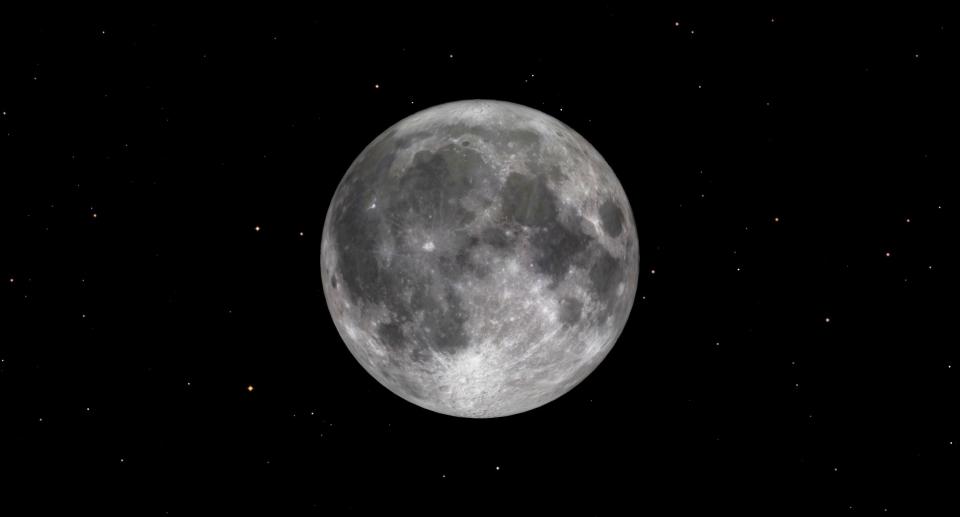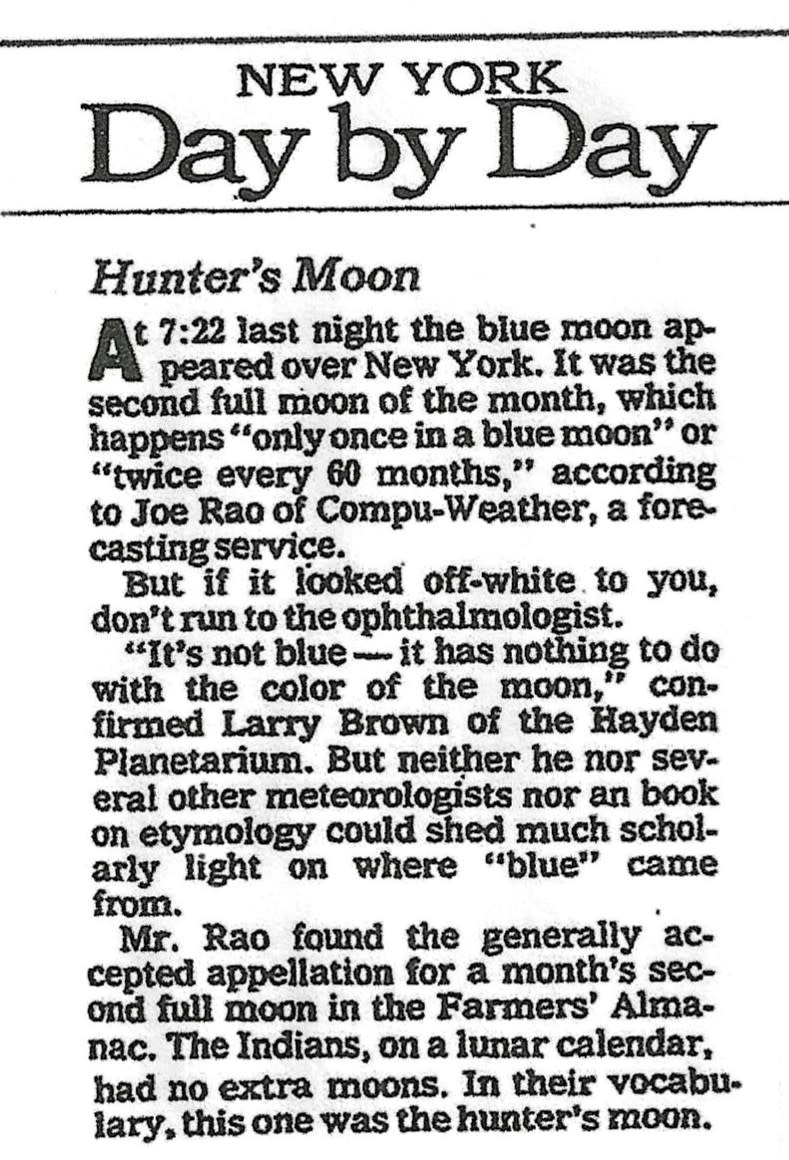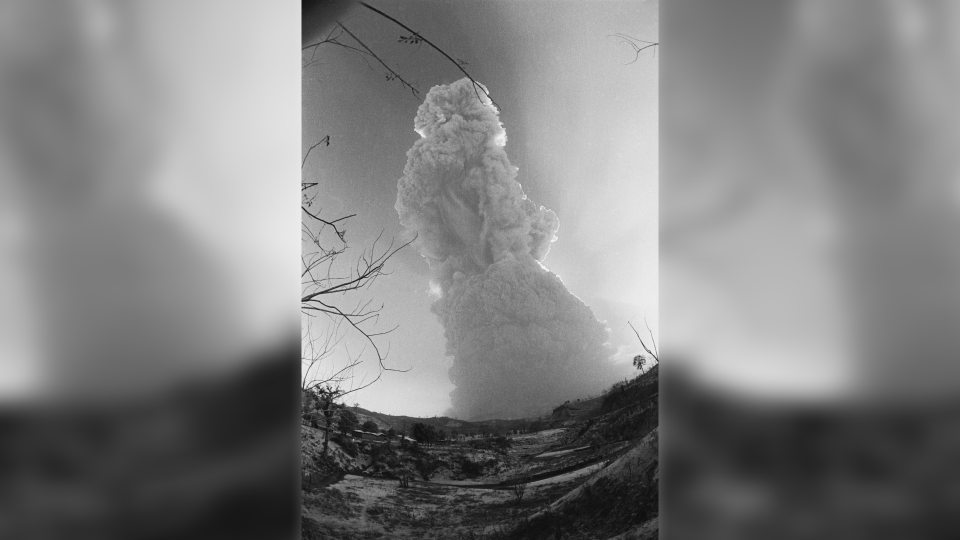When you buy through links in our articles, Future and its syndication partners may earn a commission.

Monday, August 19th marks the start of another major political convention in Chicago. And that night, stargazers will be treated to a very “unconventional” full moon, as it will also be — all politics aside — a “Blue Moon.”
But wait a minute, you might be wondering… isn’t a “Blue Moon” defined as the second full moon occurring during a calendar month? This month’s full moon falls on August 19th and it will be the only full moon of August 2024. So how can we call it a “blue” moon?
Yet it is indeed a “Blue” Moon, but only if we follow a now somewhat obscure rule. In fact, the current “two full moons in one month” rule has replaced the rule that would have allowed us to call this month’s full moon “blue.”
The Almanac Rule
TOP TELESCOPE CHOICE:


Want to see the full moon up close? We recommend the Celestron Astro Fi 102 as a top pick in our best beginner telescope guide.
The confusion over exactly how to classify a particular full moon as “blue” can be traced back to the magazine Sky & Telescope, which turned a literary blunder into lemonade by proclaiming that it was – however unintentionally – changing pop culture and the English language in unexpected ways.
In the July 1943 issue of “Sky & Telescope,” a question and answer column written by Lawrence J. Lafleur referenced the term “Blue Moon.” Mr. Lafleur quoted the unusual term from a copy of the 1937 edition of the now defunct Maine Farmers’ Almanac (NOT to be confused with The Farmers’ Almanac, still published in Lewiston, Maine).
The August 1937 almanac page listed the calendar meaning of the term “Blue Moon.”
That explanation stated that occasionally “…in one of the four seasons there would be four full moons instead of the usual three.”
“There are seven Blue Moons in a nineteen-year lunar cycle,” the Almanac continued, concluding by noting that “in the past the almanac makers had much difficulty in calculating the frequency of the Blue Moon and this uncertainty gave rise to the expression ‘Once in a Blue Moon.’”
An unfortunate omission
But while Mr. LaFleur quoted the Almanac report, he made one very glaring omission: He never mentioned a specific date for the Blue Moon.
And as it turned out, in 1937, it happened on August 21st. That was the third full moon in the summer of 1937, a summer season that would have had a total of four full moons. Names were assigned to each moon in a season: for example, the first moon of the summer was called the Early Summer Moon, the second was the Midsummer Moon, and the last was called the Late Summer Moon. But when a particular season has four moons, the third was apparently called a “Blue” Moon, so that the fourth and last could continue to be called the Late Moon.
Where does the now so popular rule of ‘two full moons in one month’ come from?


Pruett’s mistake
We need to look back at the pages of “Sky & Telescope” once again. This time, on page 3 of the March 1946 issue, James Hugh Pruett wrote an article, “Once in a Blue Moon,” in which he referred to the term “Blue Moon” and referenced Mr. LaFleur’s July 1943 article in “Sky&Telescope.” However, since Pruett had no specific data to fall back on, his interpretation of the Maine Farmers’ Almanac statement was highly subjective. Pruett ultimately came to this conclusion:
“Seven times in 19 years there were – and still are – 13 full moons in a year. This gives 11 months with one full moon each and one with two. This second one in a month, as I interpret it, was called a Blue Moon.”
Too bad Mr. Pruett didn’t have a copy of that 1937 almanac handy, or he would almost certainly have found that his assumption of “two full moons in one month” would have been completely wrong. For the date of the Blue Moon of August 21, 1937 — as is the case in August 2024 — was absolutely not the second full moon that month!
Going viral!
Mr. Pruett’s 1946 explanation was, of course, the wrong interpretation and might have been completely forgotten had Deborah Byrd not used it on her popular National Public Radio program, Star Date on January 31, 1980. We could almost say that in the wake of her radio show, the incorrect Blue Moon line “went viral.” Over the next decade, this new definition of the Blue Moon began to appear in such diverse places as the Children’s Edition of the World Almanacand the board game Trivial Pursuit.
I must confess that I was even involved in helping to perpetuate the new Blue Moon phenomenon. More than 40 years ago, in the December 1, 1982, issue of The New York Times, I referred to it in the column “New York Day by Day.”


Shortly thereafter, the new definition received international attention in the press.
Meanwhile, the original line of the Maine Farmers’ Almanac had been all but forgotten.
Playing by the (old) rules
Now let’s go back to the August full moon.
According to the ‘old’ Almanac rule, this would be a ‘Blue Moon’.
There are four full moons for the 2024 summer season:
June 21 Early Summer Moon
July 21 Midsummer Moon
Aug 19 Blue Moon
Sep 17 Late Summer Moon
This means that according to the original Maine Almanac rule — promoted by Mr. Lafleur and later misinterpreted by Mr. Pruett — the third full moon of the 2024 summer season on August 19 would be a Blue Moon.
Real blue!
Can the moon actually appear to turn blue?
Yes…but only under certain atmospheric conditions. After the massive volcanic eruption of Krakatoa in 1884, a huge cloud of ash and dust was injected into the stratosphere (5 to 30 miles or 8 to 48 km) above the Earth’s surface. The tiny ash particles—about one micron in size—acted as a filter, scattering red light and giving both the moon and the sun a distinct bluish hue, as could be seen from many locations in the Northern Hemisphere for many months after the explosion.
In addition, other volcanic eruptions are known to cause blue moons, including the 1983 eruption of El Chichon volcano in Mexico and the 1991 eruption of Mount Pinatubo in the Philippines.
And on September 24, 1950, a 200-mile-wide (321 km) swath of smoke from a series of smoldering fires in the forests of northern Alberta, Canada, cast an awesome pall over the Great Lakes, parts of New York State, and southern New England. The smoke created an unusual afternoon darkness and caused the sun’s disk to shine in eerie shades of pink, blue, and even lavender!


Extra information
Discover Blue Moons in a nutshell with ESA’s handy Blue Moon infographic. Look at this cool picture of a Blue Moon captured by the European weather satellite MSG-3 just before the moon disappeared from view. Discover the difference between types of full moons with NASA.
Interestingly enough, this is the second consecutive August with a Blue Moon. Last year, on August 30, we had the second of two full moons in a calendar month — perhaps we should call it “Pruett’s Blue Moon Rule.” What’s more, that full moon was also the closest and largest full moon of 2023; a “Super Blue Moon.”
Choose!
So which definition of a Blue Moon do you prefer? If you go by Pruett’s misinterpretation of the second full moon occurring in a calendar month, that will occur in May 2026. The second full moon in that month — the “blue” moon — will occur on May 31.
But if you prefer the “Maine Almanac Rule,” where four full moons occur in one season (as will be the case this year), that will happen again in 2029. That summer, the fourth full moon will occur just 39 minutes before the autumnal equinox (the official start of the fall season). So the full moon of August 23, 2029 can also be considered “blue.”
And if you don’t like the blue name, you can always fall back on the traditional Native American brand name for the August full moon: The Sturgeon Moon, named after North America’s largest fish, the sturgeon.
Seems a bit suspicious to me.
Want to get a closer look at the moon? Be sure to check out our guides to the best telescopes and binoculars.
And if you want to photograph the moon, we have tips for photographing the moon, as well as guides on the best cameras for astrophotography and the best lenses for astrophotography.
Joe Rao is a lecturer and visiting professor at New York’s Hayden PlanetariumHe writes about astronomy for Natural History magazinethe Farmers’ Almanac and other publications.